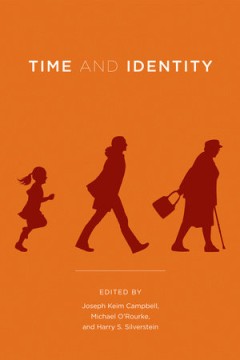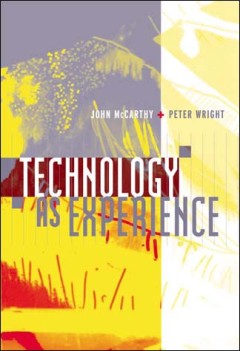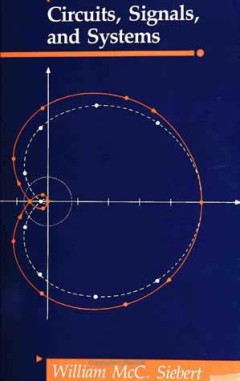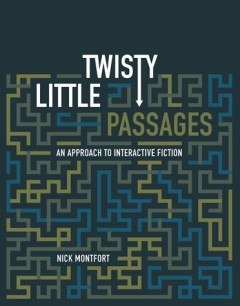Filter by

Subjective time :the philosophy, psychology, and neuroscience of temporality
Interdisciplinary perspectives on the feature of conscious life that scaffolds every act of cognition: subjective time. Our awareness of time and temporal properties is a constant feature of conscious life. Subjective temporality structures and guides every aspect of behavior and cognition, distinguishing memory, perception, and anticipation. This milestone volume brings together research on…
- Edition
- -
- ISBN/ISSN
- 9780262322744
- Collation
- 1 online resource (xviii, 668 pages)
- Series Title
- -
- Call Number
- -

Time and realism : Metaphysical and Antimetaphysical Perspectives
A new view of the metaphysics of time, arguing that the traditional tensed-tenseless debate within analytic philosophy should be seen as the first stage in a philosophical investigation of time, and that the next stage belongs to phenomenology.
- Edition
- -
- ISBN/ISSN
- -
- Collation
- -
- Series Title
- -
- Call Number
- -

Time and identity
The concepts of time and identity seem at once unproblematic and frustratingly difficult. Time is an intricate part of our experience—it would seem that the passage of time is a prerequisite for having any experience at all—and yet recalcitrant questions about time remain. Is time real? Does time flow? Do past and future moments exist? Philosophers face similarly stubborn questions about id…
- Edition
- -
- ISBN/ISSN
- 9780262265799
- Collation
- 1 online resource (vi, 330 pages).
- Series Title
- -
- Call Number
- -

Deep time reckoning :how future thinking can help earth now
"How Finland's nuclear waste experts discern far future Earths, and what the rest of us non-Finns and non-experts can learn from them"--OCLC-licensed vendor bibliographic record.
- Edition
- -
- ISBN/ISSN
- 9780262359368
- Collation
- 1 online resource.
- Series Title
- -
- Call Number
- -

Technology as Experience
How to understand our interactions with technology: considering the emotional, intellectual, and sensual aspects of the user experience.OCLC-licensed vendor bibliographic record.
- Edition
- -
- ISBN/ISSN
- 9780262256643
- Collation
- 1 online resource (x, 211 pages)
- Series Title
- -
- Call Number
- -

Circuits, Signals, and Systems
Includes index.These twenty lectures have been developed and refined by Professor Siebert during the more than two decades he has been teaching introductory Signals and Systems courses at MIT. The lectures are designed to pursue a variety of goals in parallel: to familiarize students with the properties of a fundamental set of analytical tools; to show how these tools can be applied to help und…
- Edition
- -
- ISBN/ISSN
- 9780262290968
- Collation
- 1 online resource (xvi, 651 pages) :illustrations.
- Series Title
- -
- Call Number
- -

A robot ping-pong player :experiment in real-time intelligent control
This tour de force in experimental robotics paves the way toward understanding dynamic environments in vision and robotics. It describes the first robot able to play, and even beat, human ping-pong players.Constructing a machine to play ping-pong was proposed years ago as a particularly difficult problem requiring fast, accurate sensing and actuation, and the intelligence to play the game. The …
- Edition
- -
- ISBN/ISSN
- 9780262255615
- Collation
- 1 online resource (xiii, 275 pages) :illustrations.
- Series Title
- -
- Call Number
- -

Twisty Little Passages: An Approach to Interactive Fiction
Interactive fiction--the best-known form of which is the text game or text adventure--has not received as much critical attention as have such other forms of electronic literature as hypertext fiction and the conversational programs known as chatterbots. Twisty Little Passages (the title refers to a maze in Adventure, the first interactive fiction) is the first book-length consideration of this…
- Edition
- -
- ISBN/ISSN
- 9780262297110
- Collation
- 1 online resource (xv, 286 pages)
- Series Title
- -
- Call Number
- -

Parts and Places :The Structures of Spatial Representation.
AnnotationOCLC-licensed vendor bibliographic record.
- Edition
- -
- ISBN/ISSN
- 9780262270014
- Collation
- 1 online resource (248 pages)
- Series Title
- -
- Call Number
- -

Past, space, and self
Humans were thought to be unique among the species in having minds, but recent results showing the richness and diversity in animal psychology makes this view untenable. Yet there remains the question of whether we can map the features of a particularly human psychology that are responsible for its overall structure. In this book John Campbell shows that the general structural features of human…
- Edition
- -
- ISBN/ISSN
- 9780262269780
- Collation
- 1 online resource (x, 270 pages).
- Series Title
- -
- Call Number
- -
 Computer Science, Information & General Works
Computer Science, Information & General Works  Philosophy & Psychology
Philosophy & Psychology  Religion
Religion  Social Sciences
Social Sciences  Language
Language  Pure Science
Pure Science  Applied Sciences
Applied Sciences  Art & Recreation
Art & Recreation  Literature
Literature  History & Geography
History & Geography